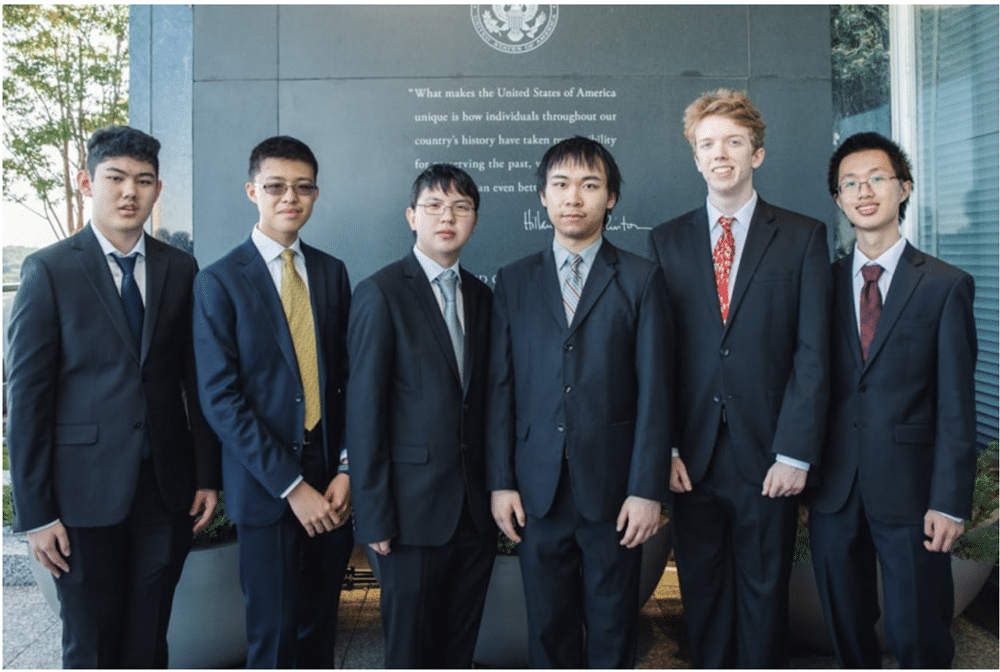
The short answer is “Yes.” According to data from the National Association of Educational Progress (NEAP) in 2022 and 2023, the Eight Grade Math Scores of each ethic group on a scale from 0 to 500 were as follows:
• Asians: highest average core about 320
• Whites: slightly lower– between 290 and 300
• Hispanics: lower –between 270 and 280
• Blacks: lowest–between 260 and 270
These data have to be interpreted carefully because they deal with averages and not individuals. There are individuals in every racial group who are outstanding in mathematics. In statistical terms, the variance in math proficiency within each race is much greater than the variance between the races. This means that if you choose at random a member from each of two different racial groups, there is a good chance that the person in the lower performing group has a greater proficiency in mathematics than the person selected from the higher performing group.
Comparing math proficiency among racial groups is further complicated by our definition of racial groups. How do we classify someone who is part Asian and part Black. As intermarriage between races becomes more prominent, individuals in our population have a mixture of various groups in their DNA. Furthermore, cultural influences and socioeconomic status (SES) play a key role in influencing whether a young person values mathematics and makes an effort to develop proficiency in that subject.
There are heart-warming stories about gifted teachers who were able to tap into the undiscovered proclivities of unmotivated students from disadvantaged home environments. Like biological alchemists, they were able to transform predestined chaff into wheat. The following is a famous example.
In 1974, a 43-year-old, feisty mathematics and physics teacher from Bolivia, named Jaime Escalante, came to teach at Garfield High School in a poor area of East Los Angeles. (Yes–ironically, the school was named after the mathematical President described in the preceding chapter.) In the mid-1960’s, permissive school administrators had relinquished control and allowed predominantly Latino street gangs to stake out their territories with “placas” on school property. The student dropout rate had reached 55% and the poor academic performance of the students had put Garfield at risk of losing its accreditation. Teachers were told to prepare courses appropriate for poorly performing students. However, Jaime made an interesting assumption: these students, in spite of their poor background, might be capable of mastering the most challenging mathematics course in high school–AP Calculus (Advanced Placement). After 4 years of unrelenting effort, Escalante secured the support of his Principal and the Advanced Placement Coordinator to test his assumption. Garfield would offer the AP Calculus course and Jaime would teach it. In that year he recruited 5 students and 2 passed the course. By 1981, 14 of the 15 students in his AP Calculus class passed the challenging AP Calculus examination. The passionate coach would ask his students, “Where is the money?” Responding to their blank stares, he would say:
The money is in chemistry, physics, computers, electronics,’…I’ll teach you math and that’s your language. With that, you’re going to make it. You’re going to college and sit in the first row, not the back because you’re going to know more than anybody.
The next year, when 18 of his students passed the examination, the Educational Testing Service at Princeton, that creates and monitors the AP courses, became suspicious of the test results and had a dozen of Jaime’s students take another test. All the students passed, validating the previous results.
During the 1980’s, word of Escalante’s success spread; in 1987 there were 73 students enrolled in AP Calculus. AP courses in various subject areas proliferated at Garfield High, and with it, a new belief in student potential. In 1988 Jay Mathews published a book titled Escalante: The Best Teacher in America and this was followed by the iconic movie, Stand and Deliver–now a staple of Math Methods courses for teachers. This publicity brought Jaime visits from President Reagan and “The Terminator,” Arnold Schwartzenegger, then Governor of California, who swore that he’d be back. In reflecting on his achievements, Escalante observed, “The key to my success with youngsters is a very simple and time-honored tradition: hard work for teacher and student alike”.
Jaime Escalante’s story reminds us that a significant component of a high proficiency in mathematics derives from an environment that inspires latent talent and enables each person to reach the potential embedded in their DNA.
